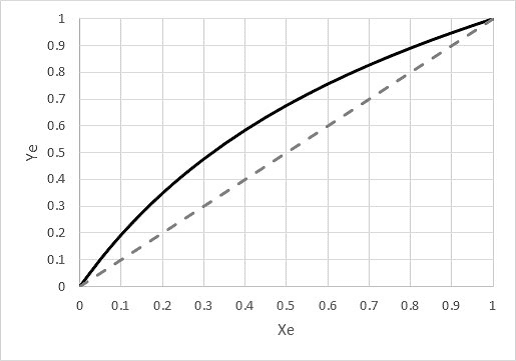


Rederive the Underwood equations solving for L min and L- min. The choice of developing the Underwood equations in terms of V min instead of solving for L min is arbitrary. Note: A pinch point at the feed can occur but is unusual in multicomponent distillation.Ĭ4. If the pinch point occurs at the feed point, mass balances can be used to find the minimum flows. (7-35) in Example 7-3 at X = 0.455 by determining Y and N as the value of the constant 0.99357 changes. (7-13) for (FR NK,bot) in terms of (FR LK,dist).Ĭ2. Have they proved that fit A is better? Explain your answer.Ĭ1.

An engineer claims that fit A of the Gilliland correlation is better than fit B because when they compared the predictions of both fits to detailed simulator results for a separation of interest, fit A was closer than fit B. In Davis’s fit for the Gilliland correlation, what are the values of N and L/D when X → 0 and Y → 1? What are the values of N and L/D when X → 1 and Y → 0?Ī8. If α A−ref = α B−ref, how does component A distribute?Ī7. Suppose you are doing a ternary distillation where component B, the LK, has a 98.3% recovery in the distillate, and component C, the HK, has a 99.8% recovery in the bottoms. With the ready availability of process simulators, why do chemical engineers still use the Fenske-Underwood-Gilliland (FUG) method?Ī6. In multicomponent distillation the Fenske equation can be used to:Įstimate the fractional recoveries of the NKs at total reflux.Ĭalculate the number of equilibrium contacts at minimum reflux.Įstimate the average K value of the LK at total reflux.Ī5. Develop your key relations chart for this chapter.Ī4. If you want to use an average relative volatility, how do you calculate it for the Underwood equation?Ī3. Separation Process Engineering, 5th EditionĪ2.


 0 kommentar(er)
0 kommentar(er)
